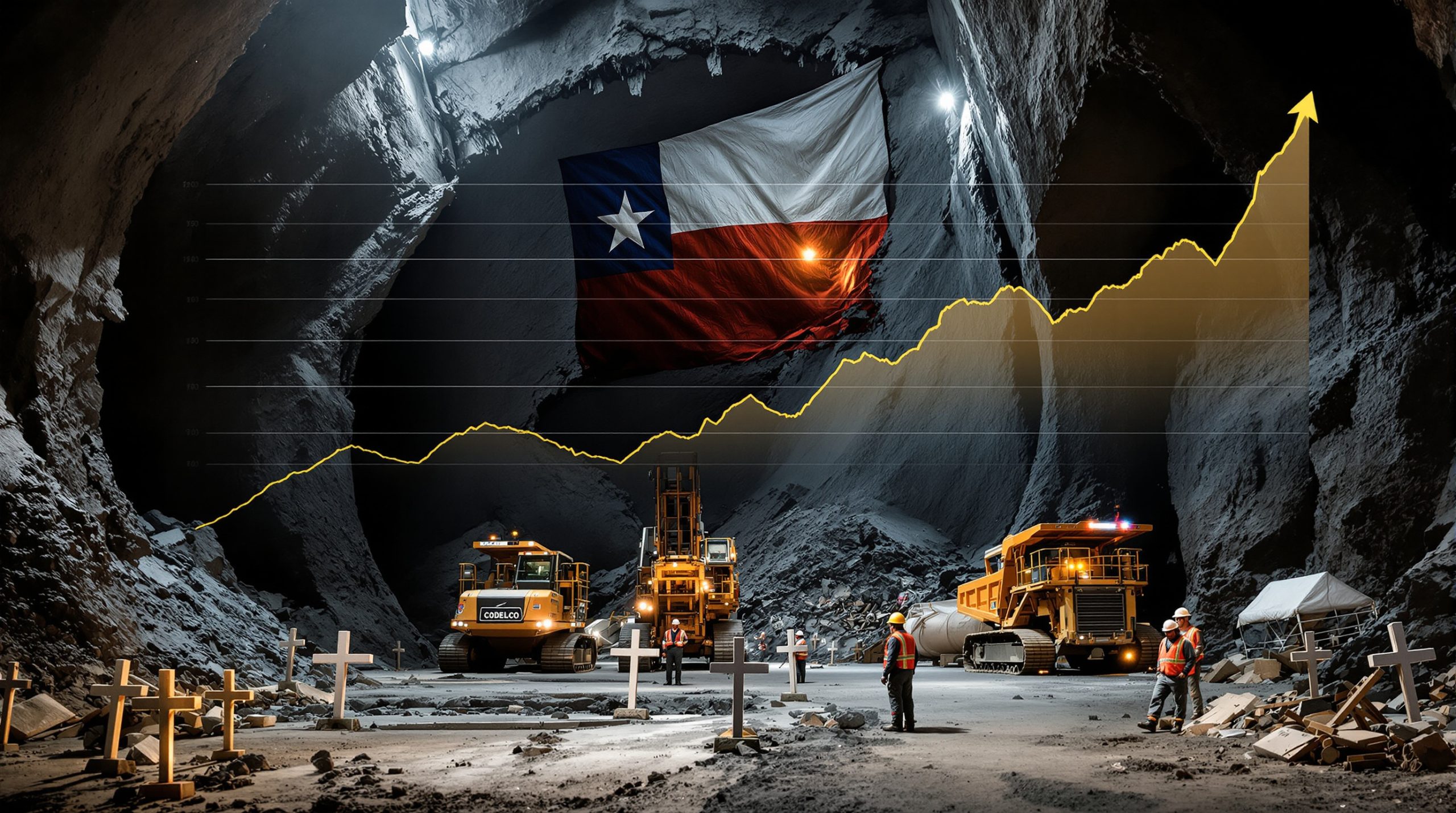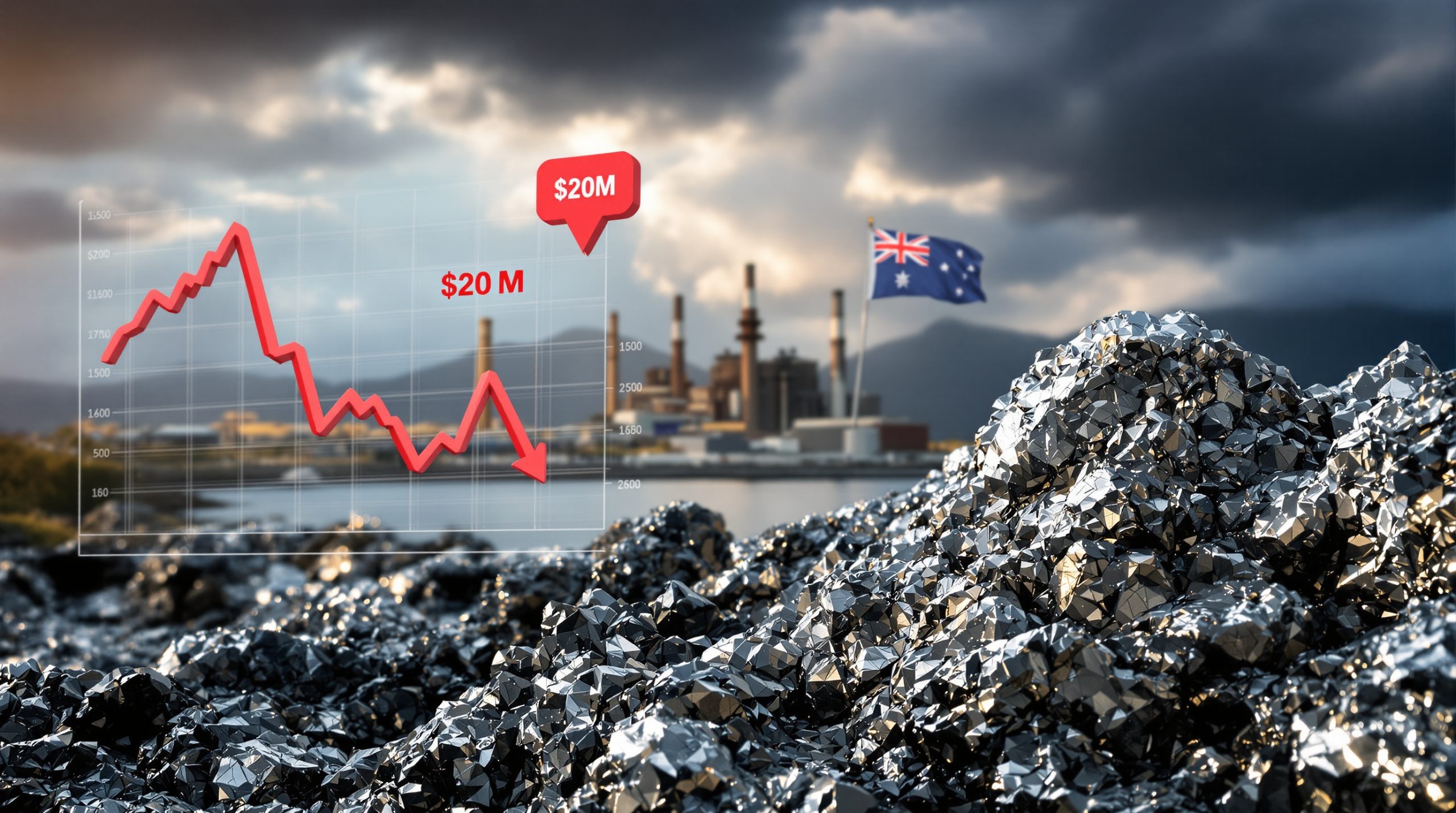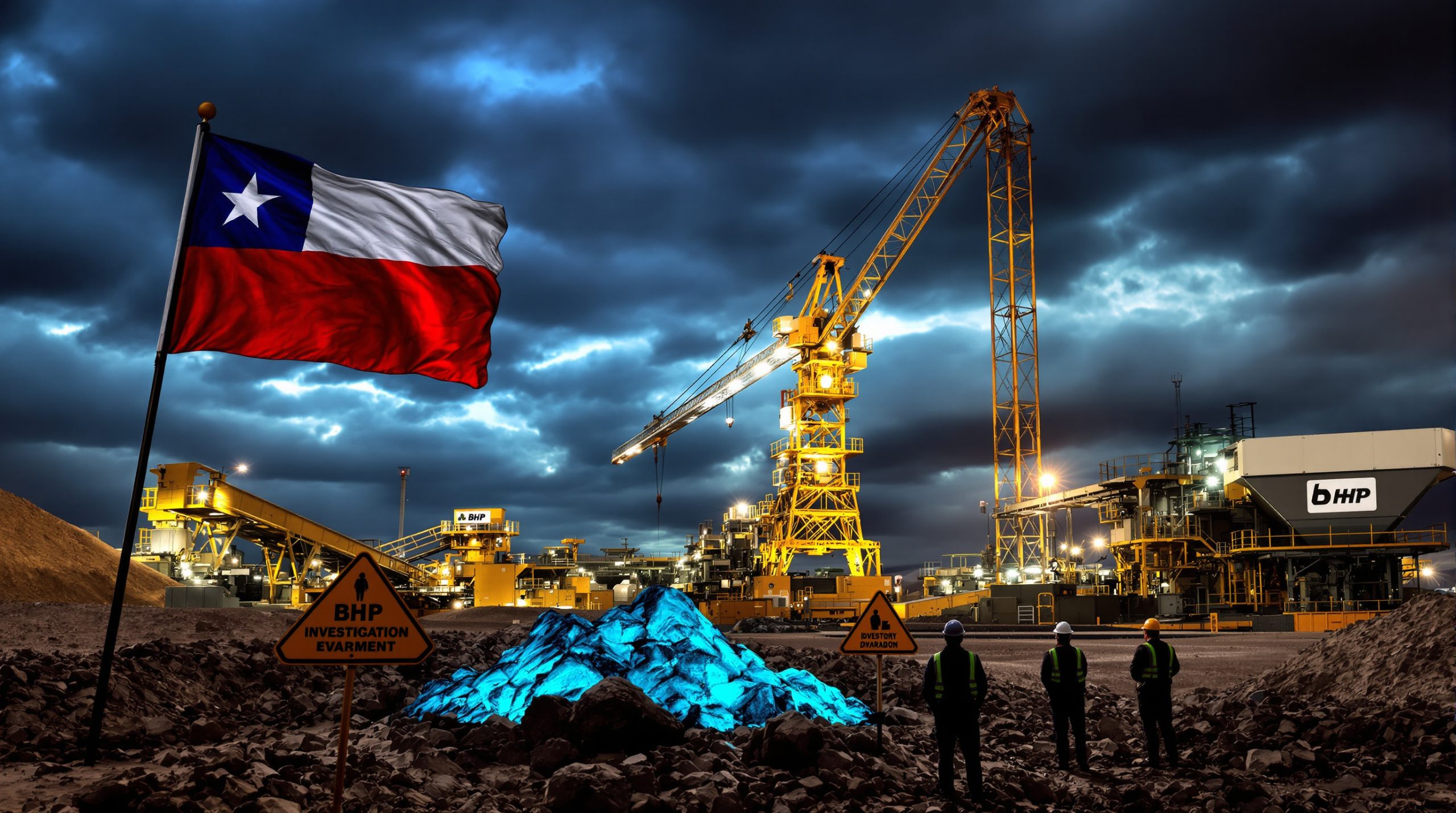How Geopolitical Tensions Are Transforming Commodity Investments
The interplay between global politics and commodity markets has reached unprecedented levels of complexity. Today's resource investors navigate a fragmented geopolitical landscape where traditional alliances are increasingly unreliable and supply chains face growing disruption. This volatile environment creates both extraordinary risks and opportunities for those involved in the geopolitical impact on commodities markets.
Nations worldwide are reassessing their resource security strategies as they can no longer take stable supply chains for granted. Countries have become increasingly selective about what they export and to whom, establishing preferential trading relationships based on geopolitical alignment rather than purely economic factors.
This uncertainty has introduced a significant premium to commodity prices across multiple sectors as nations compete to secure critical minerals security. The transformation is particularly evident in strategic resources like rare earths, energy metals, and agricultural commodities.
The Fracturing Global Order and Resource Security
The geopolitical landscape has become increasingly fragmented since 2020, with traditional partnerships proving less dependable than in previous decades. The Shanghai Cooperation Organization (SCO) Summit recently demonstrated this shift, with over 40 countries in attendance—the largest participation in the organization's history.
Resource-dependent nations have demonstrated willingness to pay premium prices to secure supplies in uncertain conditions. This behavior reflects deeper concerns about future access to critical materials needed for economic development and national security.
As traditional market mechanisms evolve, we're witnessing the emergence of new trading patterns based on US‑China trade war strategies and geopolitical alignment. Countries that once relied on global markets now actively develop direct government-to-government arrangements to ensure resource security.
Which Geopolitical Hotspots Are Most Impacting Commodity Prices?
Middle East Tensions and Energy Market Volatility
Ongoing conflicts in the Middle East continue to send ripple effects through global energy markets. The Strait of Hormuz remains a critical chokepoint, with approximately 21% of global petroleum and other liquids—about 21 million barrels daily—passing through this narrow waterway, according to the U.S. Energy Information Administration.
Any disruption to this strategic passage can trigger immediate price spikes across energy markets. Regional powers have become increasingly assertive in controlling these vital shipping lanes, introducing additional risk premiums to oil prices.
Russia-Ukraine Conflict's Continuing Commodity Fallout
The Russia-Ukraine conflict represents one of the most significant commodity market disruptions in recent history. Before the conflict, Russia supplied approximately 40% of the European Union's natural gas imports and was the world's third-largest oil producer, accounting for roughly 12% of global crude production.
European natural gas markets have undergone permanent transformation, with significant investment in new LNG infrastructure. Germany, which had zero LNG terminals before 2022, commissioned five floating storage and regasification units (FSRUs) by late 2023, demonstrating the rapid pace of energy supply chain realignment.
Agricultural markets remain under pressure as Ukraine and Russia together accounted for nearly 30% of global wheat exports before the conflict. This disruption continues to contribute to food security concerns in import-dependent regions worldwide.
China's Strategic Resource Positioning
China's approach to commodity markets increasingly reflects geopolitical rather than purely economic considerations. The country has systematically built dominant positions in processing capacity for critical minerals, particularly those essential to the energy transition.
Recent policy shifts regarding critical mineral exports and processing technology transfers signal a more strategic approach to leveraging resource advantages. This has accelerated efforts by Western nations to develop alternative supply chains, driving copper investment insight into mining projects outside China's sphere of influence.
How Are Nations Responding to Resource Nationalism?
The Rise of State Capitalism in Resource Development
Governments worldwide are taking increasingly direct roles in strategic resource development. This trend represents a significant departure from decades of market-driven resource allocation and fundamentally changes investment dynamics in the sector.
In the United States, direct government investment in critical mineral projects is accelerating. The U.S. Department of Defense awarded MP Materials Corporation a $35 million contract under the Defense Production Act to support the construction of a heavy rare earth element separation facility in California.
The Inflation Reduction Act of 2022 allocated $500 million for Defense Production Act investments in critical minerals, highlighting the strategic importance of these resources to national security and economic competitiveness.
Similar trends are evident across Europe, with governments providing substantial subsidies and strategic investments to secure battery material supply chains. This state-driven approach fundamentally changes project economics and creates new winners and losers in the resource sector.
Strategic Stockpiling and Resource Hoarding
Nations are increasingly building strategic reserves of critical commodities, creating additional demand pressures. This stockpiling activity can distort market signals and create artificial price pressures that complicate investment decisions.
The U.S. Geological Survey maintains a list of 50 critical minerals essential to U.S. economic and national security. This designation guides government investment and strategic stockpiling decisions, prioritizing resources deemed vital to economic and military interests.
Understanding government stockpiling programs has become essential for commodity investors seeking to anticipate price movements. The strategic imperative behind these programs often supersedes traditional supply-demand economics, creating new investment dynamics.
Which Commodities Are Most Vulnerable to Geopolitical Disruption?
Precious Metals: Safe Havens in Uncertain Times
Gold continues to serve as the ultimate geopolitical hedge, with central banks accelerating purchases to diversify reserves away from dollar-denominated assets. Central banks were net purchasers of gold for 14 consecutive years through 2023, with 2022 seeing the highest level of purchases (1,136 tonnes) since 1967.
The People's Bank of China has been particularly active, adding to reserves for 18 consecutive months through May 2024. This persistent buying reflects deeper concerns about international monetary system stability beyond inflation worries.
Gold price analysis represents not just inflation hedging but deeper anxieties about the stability of the international monetary system as geopolitical fractures widen. While historical context is important—gold reached previous all-time highs of approximately $2,075 per ounce in August 2020—current market dynamics suggest continued strength.
Silver has followed gold's trajectory but with greater volatility, reflecting its dual role as both a monetary metal and industrial commodity. Silver reached previous all-time nominal highs of approximately $49.45 per ounce in April 2011. Adjusted for inflation, the 1980 peak would equal approximately $178 per ounce in 2024 dollars.
Critical Minerals and the Technology Competition
The competition for technology dominance between major powers has elevated certain minerals to strategic importance. Nickel, lithium, cobalt, and rare earth elements are now viewed through a national security lens rather than purely economic considerations.
Indonesia's consolidation of the global nickel market illustrates how rapidly supply dynamics can shift. Indonesia implemented an export ban on unprocessed nickel ore in January 2020 to encourage domestic processing. The country produced approximately 1.6 million tonnes of nickel in 2022, representing about 48% of global mine production.
This concentration creates vulnerability for Western manufacturers dependent on nickel for stainless steel and battery production. Similar dynamics are playing out across multiple critical mineral markets, creating both risks and opportunities for investors who understand the geopolitical dimensions.
How Is China Reshaping Global Technology and Resource Markets?
The Catfish Strategy: Learning from Western Technology Leaders
China has systematically implemented what analysts call the "catfish strategy" to develop domestic technology champions. This approach involves inviting leading Western companies into the Chinese market, creating conditions for knowledge transfer, and then supporting domestic competitors once they've absorbed sufficient expertise.
The catfish effect originates from a historical practice where fishermen would add catfish to tanks of cod to keep the cod active during transport. In business strategy, it refers to introducing strong competition to stimulate improvement in existing players.
This pattern has played out across multiple sectors, from internet platforms to electric vehicles:
- Google operated in China from 2006-2010, during which time Baidu strengthened its position
- Facebook faced similar challenges against WeChat
- LinkedIn competed with domestic alternative Maimai
- Uber eventually lost market share to Didi
- Tesla is currently experiencing this pattern in the electric vehicle market
Tesla's market share in China's EV sector has reportedly declined significantly while domestic manufacturer BYD has consolidated over 30% of the market. This demonstrates how quickly market dynamics can shift when strategic national priorities align with industrial policy.
Automation and Manufacturing Dominance
China's aggressive automation of manufacturing represents another dimension of its resource strategy. According to the International Federation of Robotics, China had an operational stock of approximately 1.6 million industrial robots by the end of 2023, representing about 52% of global installations.
China installed approximately 276,000 new industrial robots in 2022, more than all other countries combined. Robot density in China reached 392 units per 10,000 employees in manufacturing by 2023, surpassing the United States (285 units) but still behind South Korea (1,012 units) and Singapore (730 units).
This manufacturing advantage extends to resource processing, where China dominates conversion of raw materials into high-value products. From rare earth separation to battery cathode production, China's processing capacity creates leverage in commodity markets that exceeds its domestic resource endowments.
What Does the Shifting Global Order Mean for Commodity Investors?
The Decline of Dollar Dominance in Commodity Trading
The international monetary system is evolving rapidly, with implications for how commodities are priced and traded. The petrodollar system, established in the 1970s where Saudi Arabia agreed to price oil exclusively in U.S. dollars and invest surplus oil revenues in U.S. Treasury securities, is facing new challenges.
As more commodity transactions occur in non-dollar currencies, new pricing mechanisms and trading relationships are emerging. This transition creates both volatility and opportunity for commodity investors who understand the shifting dynamics of international settlement systems.
Jurisdiction Matters: From Risk to Alliance Advantage
The traditional concept of jurisdictional risk in resource investment is evolving toward what might be called "alliance advantage." Projects in countries aligned with major consuming nations may receive preferential treatment, expedited permitting, and strategic investment support.
This shift fundamentally changes how investors should evaluate mining projects. Beyond geological and economic considerations, the strategic importance of a project to national interests may determine its development timeline and ultimate success.
Investors need to consider not just the resource quality and economics but also how a project aligns with emerging geopolitical blocs and national strategic priorities.
How Should Investors Position for Geopolitical Commodity Disruptions?
Diversification Across the Risk Spectrum
In a fractured geopolitical landscape, portfolio diversification takes on new dimensions. Investors should consider not just commodity type but also geographic exposure and alignment with different geopolitical blocs.
A balanced approach might include:
- Physical precious metals for wealth preservation
- Established producers in stable jurisdictions for income
- Strategic development projects aligned with national interests for growth
- Selective exploration exposure in emerging jurisdictions for asymmetric upside
The mining business carries extraordinary risk, with single company exposure potentially leading to significant capital impairment. Recent examples include coups in Niger and government interventions like the Cobre Panama mine shutdown affecting even supposedly stable companies like Franco-Nevada.
Risk Management Through Position Sizing
The heightened volatility in commodity markets requires disciplined position sizing and risk management. Many experienced resource investors recommend taking profits when the market provides opportunities to reduce risk.
When commodity prices rise significantly, it's prudent to withdraw principal from speculative positions while letting the remaining shares ride "risk-free." This approach allows investors to maintain exposure to potential upside while protecting against the sector's inherent volatility.
Successful commodity investors maintain liquidity reserves to take advantage of market dislocations while avoiding excessive concentration in any single commodity or jurisdiction.
What Commodities Present the Greatest Opportunities in 2025?
Gold and Silver: Monetary Metals in a Fractured Financial System
Precious metals continue to benefit from both monetary uncertainty and geopolitical tension. Gold serves as a barometer for geopolitical risk, rising when investors seek safe havens during periods of international tension and monetary uncertainty.
Silver presents a particularly compelling case, with industrial demand growing from renewable energy and electronics while investment demand follows gold's monetary signal. The dual exposure of silver to both monetary trends and industrial applications creates potential for outperformance in an environment where both factors align.
Most mainstream investors still have minimal exposure to precious metals, suggesting potential for significant capital flows into the sector as awareness of geopolitical and monetary risks increases. Furthermore, the gold price forecast continues to show bullish signals for long-term investors.
Nickel: Structural Undersupply After Market Consolidation
The nickel market presents a compelling long-term opportunity despite recent price weakness. Indonesia has transformed global nickel supply dynamics, implementing an export ban on unprocessed ore in 2020 and developing significant processing capacity with Chinese investment.
Indonesian nickel production is projected to continue growing significantly through 2025, driven by investment in processing for electric vehicle batteries. However, as Indonesia modernizes and faces increasing environmental scrutiny, production costs are likely to rise.
With Canadian and Australian producers sidelined by current prices, the market faces potential supply constraints when Indonesian expansion inevitably slows. The strategic importance of nickel for both stainless steel and battery production ensures strong long-term demand, creating a potential supply-demand imbalance in the coming years.
Copper: Essential Metal for Electrification
Copper remains the most critical metal for global electrification efforts. While near-term economic uncertainties may create volatility, the structural demand growth from renewable energy, grid expansion, and electric vehicles ensures strong long-term fundamentals.
The geopolitical dimension adds another layer of support, as Western nations seek to reduce dependence on Chinese processing capacity by developing domestic supply chains. This strategic imperative is driving investment into copper projects in politically aligned jurisdictions.
For investors with a longer time horizon of 5-10 years, copper presents compelling opportunities, particularly with high-quality management teams operating in strategically important jurisdictions.
Navigating the New Commodity Landscape
The intersection of geopolitics and commodities has never been more consequential for investors. As the global order fragments, traditional market mechanisms are increasingly supplemented or supplanted by strategic considerations and direct government intervention.
Successful navigation of this landscape requires understanding not just supply-demand fundamentals but also the evolving strategic interests of major powers. The geopolitical impact on commodities markets will continue to be felt most strongly in those essential to technological leadership, energy security, and monetary stability.
The combination of structural underinvestment in resource development and increasing strategic competition creates the potential for significant price appreciation across multiple commodity classes. For investors willing to embrace this complexity, the current environment offers extraordinary opportunities.
When evaluating commodity investments in this new landscape, consider not just the traditional metrics of supply, demand, and cost structure, but also strategic importance, geopolitical alignment, and the potential for government intervention—either as a tailwind or headwind to development.
Want to Invest in the Next Major Mineral Discovery?
Gain immediate alerts on significant ASX mineral discoveries with Discovery Alert's proprietary Discovery IQ model, transforming complex mineral data into actionable insights. Explore why historic discoveries generate substantial returns by visiting Discovery Alert's dedicated discoveries page and begin your 30-day free trial to position yourself ahead of the market.




